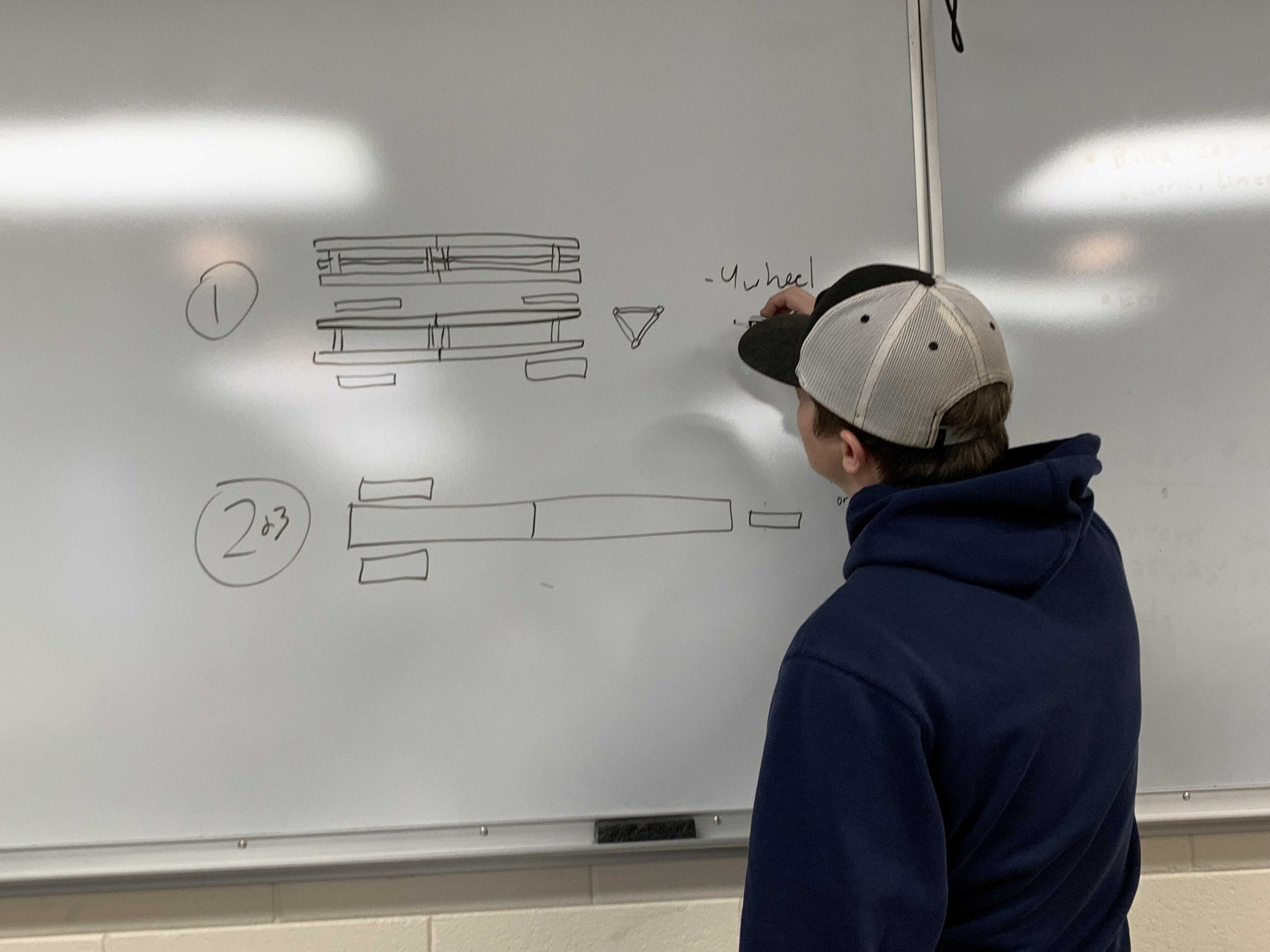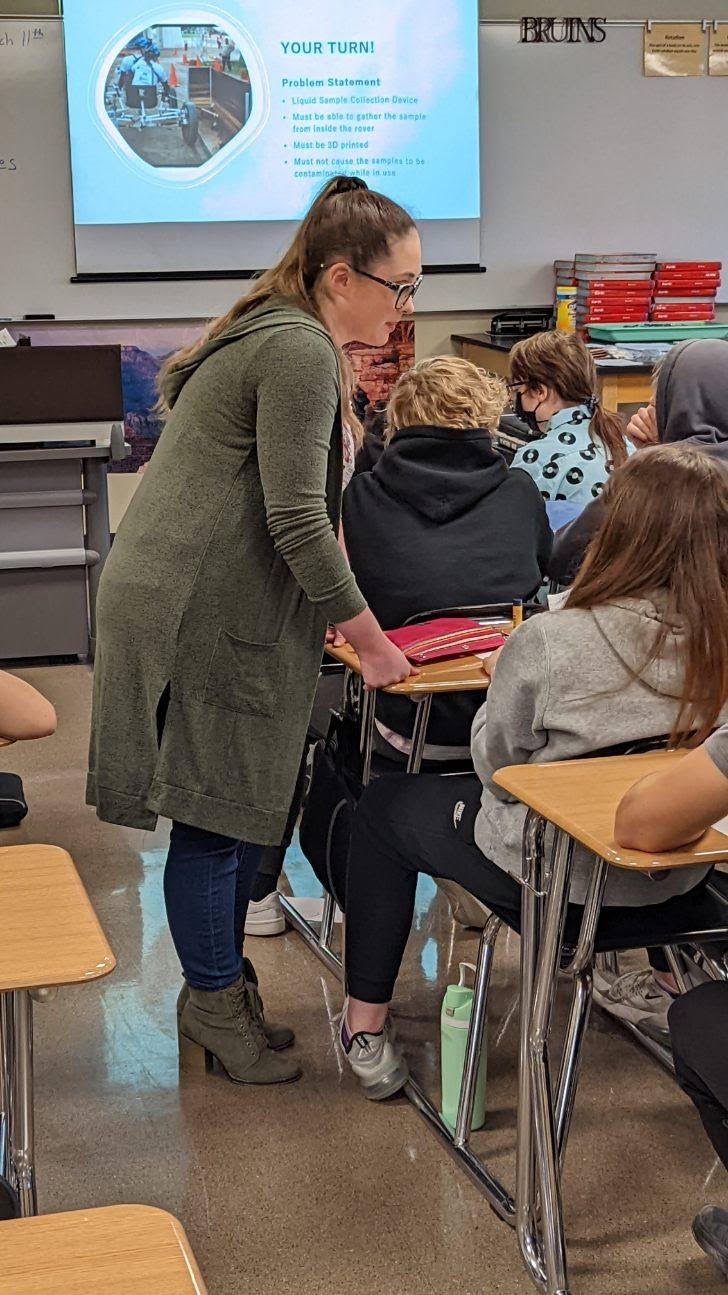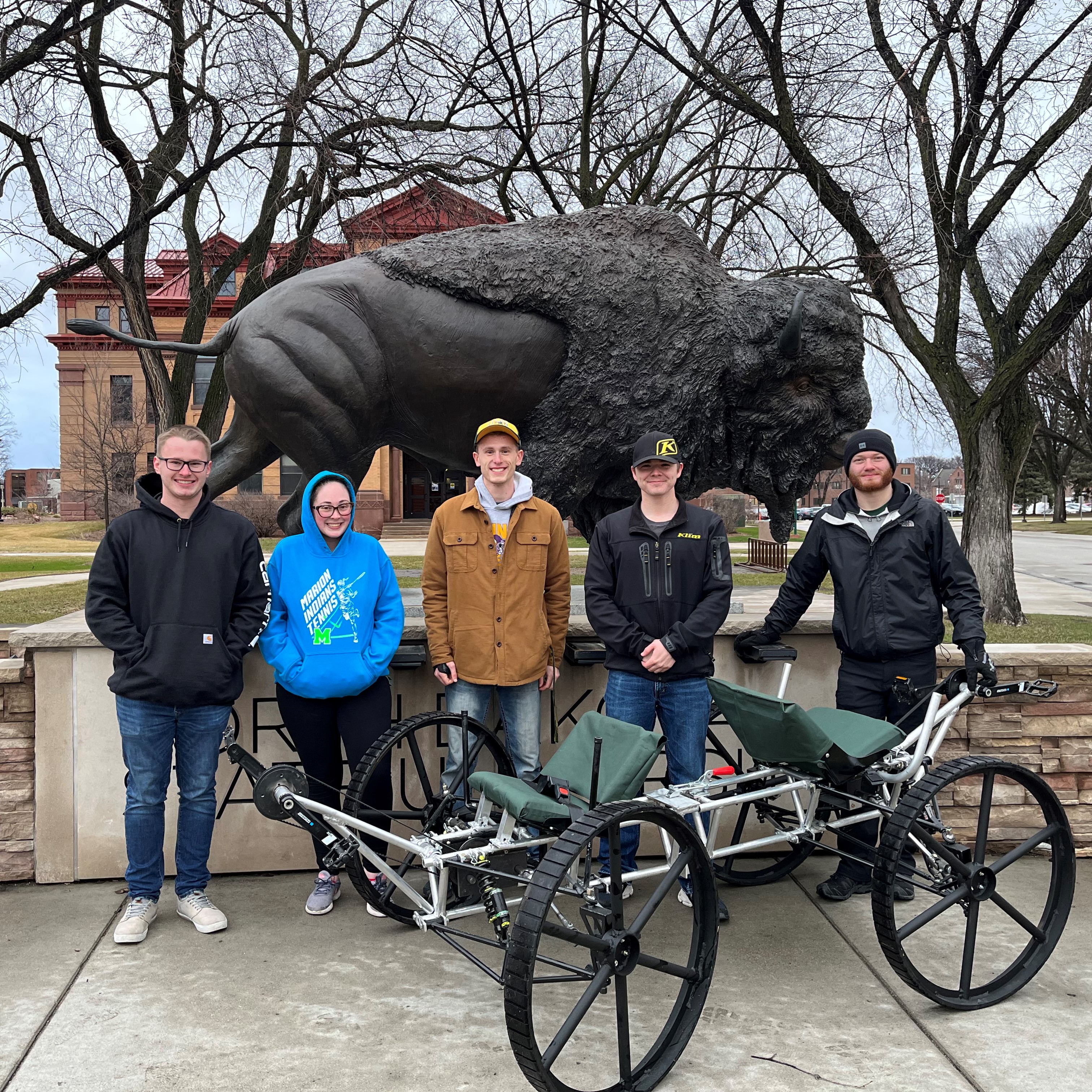Final Product
Since the trip to Huntsville, AL was cancelled due to COVID, we were unable to compete in the in-person competition. However,
we built a shortened version of the obstacle course and recorded a video of us driving the rover through it. The rover sucessfully
made it through 75% of the obstacles. We also submitted a final report to the NASA HERC commitee.
Throughout the project, I learned how to work in a team with people who have different work styles than me, how to adapt when issues
arise, and how to sucessfully complete a project from start to finish. If the project were to be redone, I would have been more
persistent when needing items from the teacher and the sponsors. I also would have ordered spare belts since ours stretched too far
after one run. I had an amazing time learning about the design process and working with my team. I am so grateful for the opportunity
to be a part of this project!


